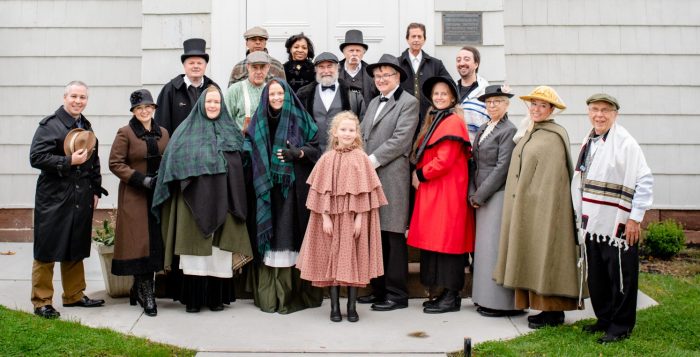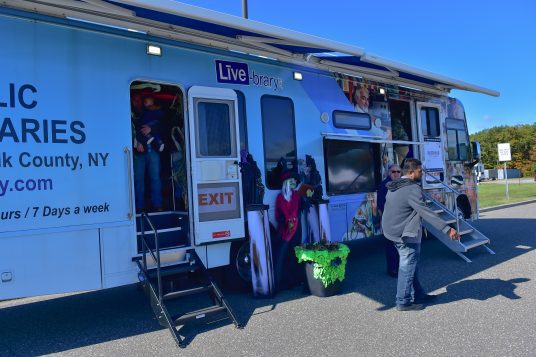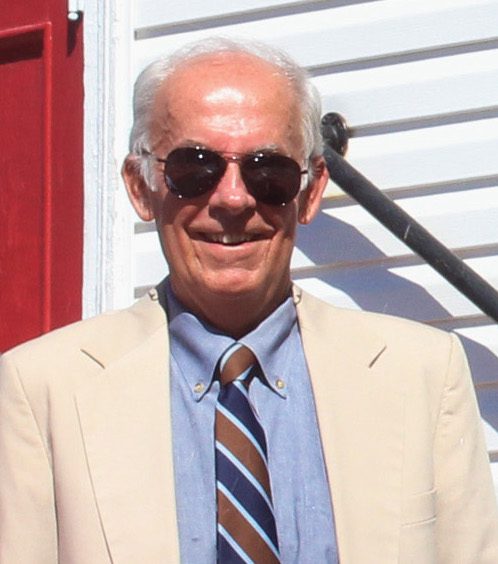Preserving Long Island’s water starts with your vote
A recent article in Newsday described how the tourist industry is booming on Long Island and particularly in Suffolk County.
We have our farms, beaches, vineyards, state and national parks, museums, fishing and other water activities, theaters, music venues and, of course, a diversity of people. What underpins all of these things is the quality of our environment, especially water. Water that we drink, bathe in, cook in, swim, harvest and play in.
If we do not protect this resource, we will become known as the island surrounded by filthy water with contaminated drinking and bathing water that makes residents and visitors alike sick. All of this would not make for good tourism slogans.
If you want a healthy life and healthy economy, then be sure to vote, and vote for the candidates that pledge to protect this life-giving resource. Vote the Democratic line A and protect our beautiful island.
Deirdre Hensen
Miller Place
Democratic policies wrong for Suffolk
Suffolk County went red last year because Democrats running New York State have given us policies local voters found wholly unacceptable.
Incumbents, even long-serving ones, lost races because they didn’t grasp the sea change in priorities for county residents.
It began with a disgraced Gov. Andrew Cuomo’s [D] deadly mishandling of the COVID-19 public health emergency. In addition, the real-time results of Dem-endorsed cashless bail hit home when Suffolk suffered 399 fentanyl overdose deaths in 2022, and Officer Michael LaFauci miraculously survived a shooting from an alleged assailant, whose prior arrests should have kept him off the streets.
Proudly proclaiming New York state and its five boroughs “sanctuaries” has been a humanitarian disaster, a security risk and fiscal nightmare. The latter is sure to cost already-overburdened taxpayers a ton of money.
Even hardworking, productive people fleeing NYS in record numbers have not been a wakeup call for Democrats. None of these crises have been critical enough for Gov. Kathy Hochul [D] to call her one-party rule Legislature back to Albany. There remains no serious attempt to reverse their poor decisions regarding our high taxes, growing crime and flood of unvetted migrants.
On the contrary, they have candidates running on platforms pretty similar to the ones costing them elections less than a year ago.
Long-serving, former Assemblyman Steve Englebright [D-Setauket] has voted for cashless bail, remained mum on our sanctuary status and been part of the Dem bloc that got NYS rated as having the highest overall tax burden in the U.S.
As someone who’s had cordial, respectful conversations with Steve, this is not meant to be a personal attack. But, his endorsement by the Working Families Party is a clear indication they believe he remains in step with many of their far-left positions, which puts him out of step with the changing concerns of Suffolk voters.
Jim Soviero
East Setauket
School literature at Three Village school district and America’s legacy
Upon reading the letter about the book “The Absolutely True Diary of a Part-Time Indian,” [“Challenging the assigned literature at Three Village school district,” The Village Times Herald, Oct. 19] I was wondering if the letter was written tongue in cheek. Our record of how we have treated Native Americans is absolutely horrendous.
To say, “With a few exceptions, we have been nothing but kind to the so-called Native Americans,” is a gross and inexcusable perversion of American history. Native Americans have been murdered, forced off their land, moved across the country, forced to live on reservations and assigned to the horrors of poverty and alcoholism.
The Massachusetts Bay Colony paid a bounty for Indian scalps. These are the same people who supposedly “broke bread” with Native Americans. The book referred to in the letter is a story of the life of one teenager and how being a Native American affected that life.
The book’s discussion is of the life of a teenager, similar in age to the juniors in our high school. Those juniors are 16 to 17 years old. This is not a manual for decadent behavior, but rather a story of what one Native American has lived through. These stories are known to our teenagers in their lives growing up in 21st century America.
Unfortunately, this letter distorts American history and shows little faith and understanding of America’s teenage population.
Stuart Bernstein
Setauket
Distinguishing between opinions and prejudice
Regarding the letter, “Challenging the assigned literature at Three Village school district” [The Village Times Herald, Oct. 19], I am astonished that you would publish such an ignorant and bigoted letter, which was so off the wall I thought at first it was a joke.
We have a long, rich tradition of free speech in our country, which says that everyone is entitled to their opinion. But an opinion unsupported by evidence is a prejudice. And while people are entitled to their prejudices, you do not have to lend them legitimacy by printing unsupportable claims about how the Europeans treated the Native populace with mercy and kindness (Google the “Trail of Tears” sometime), or that 16- and 17-year-old high school juniors need to be protected from literature that might lead them to perform “decadent acts on themselves,” presumably meaning masturbation.
I’ve got a feeling the horse has long since left the barn on that one, which recalls the old joke: “99 out of 100 teenage boys admit to masturbating — and the other one is lying.”
People are allowed to believe all kinds of nonsense, but you are under no obligation to amplify and legitimize it.
Kenneth Wishnia
East Setauket
The case for transitioning Long Island’s homes from gas to electricity
The Oct. 19 article on Long Island’s opposition to the NYS natural gas ban [“NYS natural gas ban meets intense local opposition on Long Island,” TBR News Media website] details some potential issues predictably raised by those concerned about change or invested in the status quo, but some of these concerns don’t stand up and others are addressed in legislation passed by the Senate last year and which proponents are now urging Gov. Kathy Hochul [D] to include in her budget this year.
Breathing clean air inside our homes will be a significant benefit to everyone currently using gas, most especially our children.
Both LIPA and PSEG Long Island state that the present electrical system is quite adequate to handle minor additional loads from stoves and heat pumps, especially since winter loads are lower than summer loads.
Only about 1,100 new homes are built on all of Long Island each year, limiting the impact on job elimination. While plumbing demand will decrease when electricity replaces gas, the demand for electricians will rise.
Affordability is a critical consideration as we move forward in the energy transition, and the proposed NY Heat Act directly addresses the issue in two ways. The bill will cap energy bills at 6% of income for low- and middle-income families. In addition, the legislation would do away with the “100-foot rule,” which requires customers to pay for the extension of gas lines to buildings within 100 feet, regardless of need. Estimates state that the 100-foot rule could result in a savings of up to $75 per month on energy bills for low- and middle-income families.
Most importantly, the switch from gas to electric will dramatically improve indoor air quality, leading to improved health for NY residents. In the U.S., children living in a home with a gas stove have an increased risk of asthma by 42%. Chronic exposure is linked to cancer and heart disease.
“The levels of [indoor] air pollution can easily exceed health guidelines and would be considered illegal if they occurred outside,” Sandra Steingraber, co-founder of Concerned Health Professionals of New York, said. “These vapors quickly spread throughout our homes and in some cases raise bedroom benzene concentrations above acceptable health benchmarks for hours after the gas stove has been turned off.”
Both the American Medical Association and the American Public Health Association have recognized the links among gas stoves, nitrogen dioxide pollution and increased respiratory illnesses in children, and have called for a transition away from gas stoves and toward electrification of home appliances.
Stuart Braman
Port Washington
Editor’s note: The writer is an adjunct research scientist at Lamont-Doherty Earth Observatory of Columbia University.
The importance of local restaurants
Why not patronize your neighborhood restaurants during Long Island Restaurant Week Oct. 25-Nov. 5 with a wide variety of lunch and dinner specials all year long.
My wife and I don’t mind occasionally paying a little more to help our favorite restaurants survive. Don’t forget your cook and server. We try to tip 20-25% against the total bill, including taxes. If it is an odd amount, we round up to the next dollar.
If we can afford to eat out, we can afford an extra dollar tip. When ordering take out, we always leave a dollar or two for the waiter or cook. It is appreciated.
The restaurant industry employs hosts, bartenders, waiters, busboys, cooks, cashiers and parking valets, wholesale food sellers, distributors and linen suppliers. There are also construction contractors who renovate or build new restaurants.
Our local entrepreneurs work long hours, pay taxes and provide local employment especially to students during the summer.
If we don’t patronize our local restaurants, they don’t eat either. Why travel into Manhattan when we have so many great neighborhood restaurants in Centereach, Cold Spring Harbor, Commack, Hauppauge, Northport, Mount Sinai, Port Jefferson, Smithtown, Stony Brook and other nearby communities in Suffolk County from which to select.
Larry Penner
Great Neck
Supporting Chad Lennon for Suffolk
As a Vietnam War combat veteran with a Combat Infantry Badge, Bronze Star V Device and Air Medal, I am asking not only all veterans but all to vote for Chad Lennon for Suffolk County’s 6th Legislative District.
Chad is a major in the U.S. Marine Corps and a proven leader. While serving in Afghanistan, he was wounded and received a Purple Heart. I can tell you firsthand that Chad is always assisting veterans and their families. He stands with our men and women in blue and will always back them.
He will be active in stopping drugs that are decimating our young generation as well as keeping environmental issues top of mind. Chad has proven himself as a leader and will bring that learned experience to the 6th Legislative District. Vote Chad Lennon.
Joe Cognitore
Sgt. 2/8th First Cav Air Mobile Recon
Rocky Point
Two incumbent Suffolk County legislators stifle democracy
As we approach Election Day, some incumbent Suffolk County legislators are counting on voters to have short memories. Three months ago, they voted against allowing you to vote on the Suffolk County Water Quality Restoration Act.
This act was passed by the New York State Legislature earlier this year as part of the state budget. It’s the product of many years of delicate negotiations. It has overwhelming bipartisan support from Suffolk County state and congressional representatives, earmarking millions of dollars of New York State money for the benefit of Suffolk.
It also would mean additional millions of federal infrastructure dollars for Suffolk. It addresses, after decades of inaction, the underlying causes of the serious and worsening problems with water quality in our county, producing extensive algal blooms and fishkills in our lakes, harbors and estuaries, and growing nitrogen pollution of our aquifers.
In spite of all this, county Legislators Leslie Kennedy [R-Nesconset] and Trish Bergin [R-East Islip] voted to not allow this act to be put to the voters on the November ballot. Doing so, they effectively stymied it, since it requires voter approval to take effect.
They offered lame excuses for this, such as proposing to “fix” the act. They know this is bogus. The act, which allocates state money to our county, is state, not county legislation. There was griping about the 1/8 of 1% increase in the sales tax, which amounts to $50 on $40,000 of nonfood or clothing purchases in one year. Is that too much to finally deal with our water pollution problem?
Most likely, the real reason for blocking voters from approving or rejecting this act was to protect their own political fortunes, hoping that with it off the ballot voters who care about water quality won’t show up.
Which brings up the real issue: The flagrant arrogance of putting themselves above the people who elected them. If you oppose the Suffolk County Water Quality Restoration Act, fine. You should be able to vote to reject it. If it’s rejected by the voters, that’s the way democracy works. The way democracy doesn’t work is by having politicians use their power to disallow voting.
Whatever your views on the act itself, you should vote for Denis Graziano or Derek Stein, who oppose Kennedy and Bergin, respectively, to send the message that politicians who use their power to block voters have no business representing them.
David Friedman
St. James








































